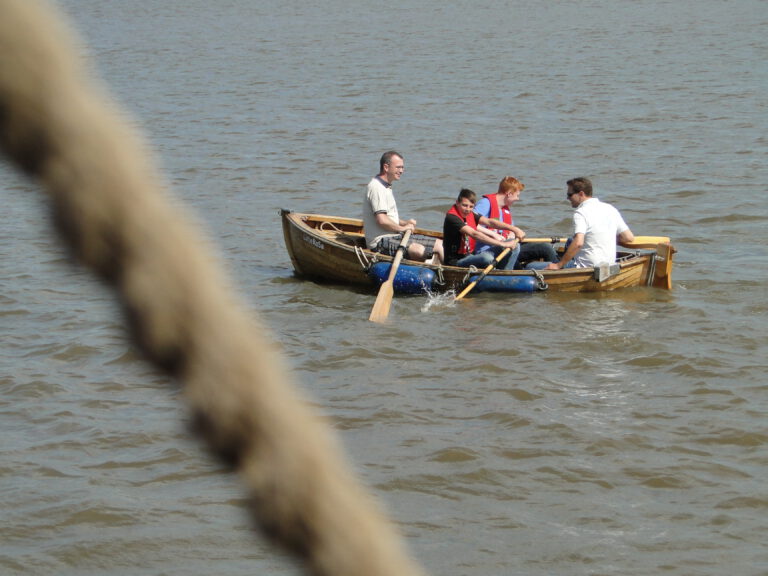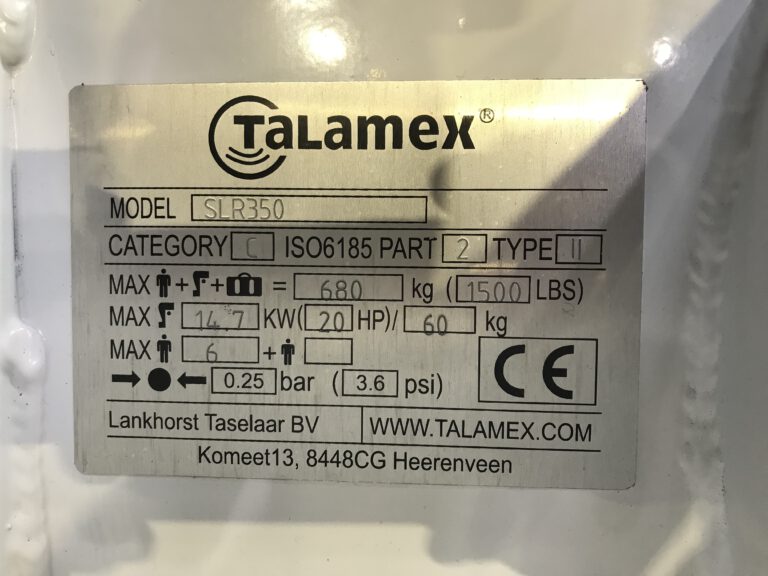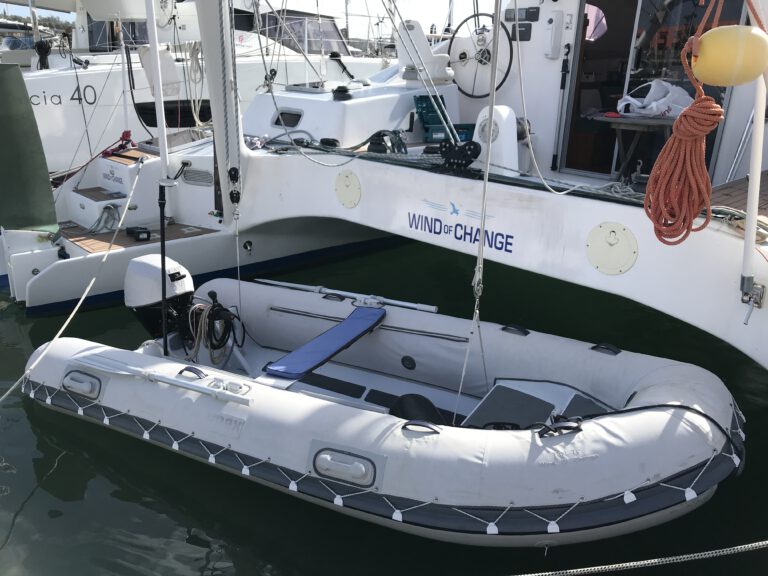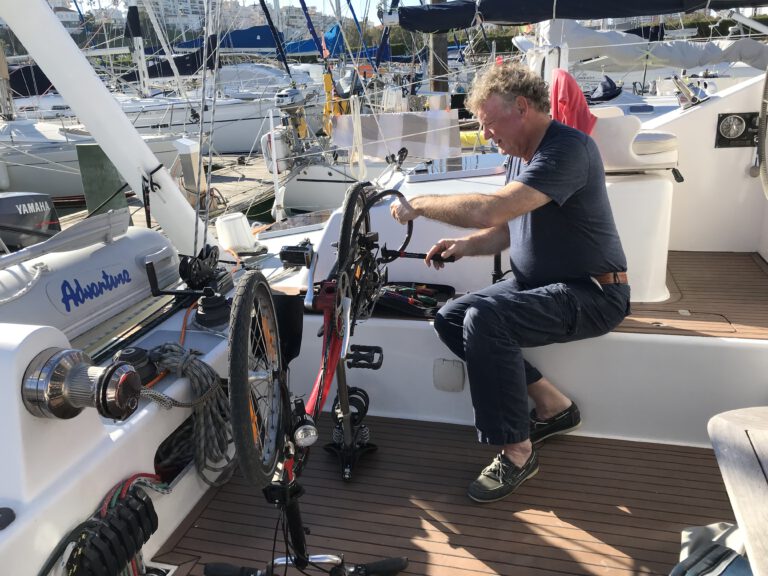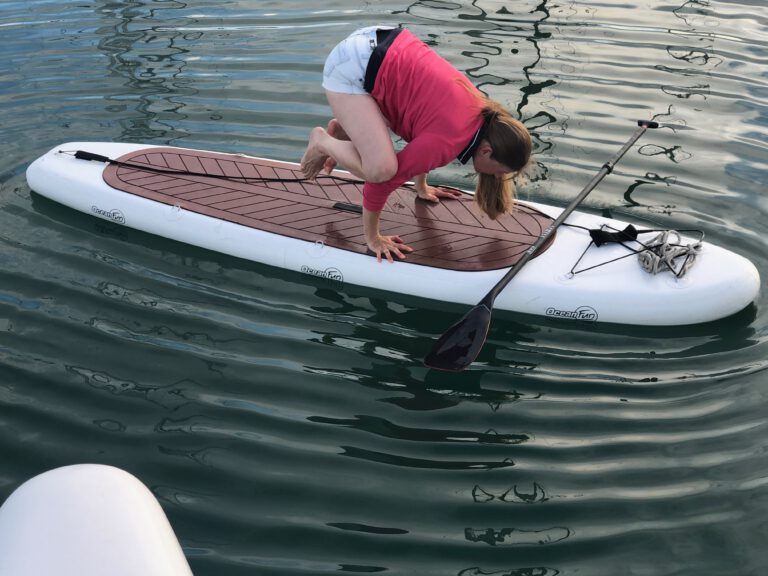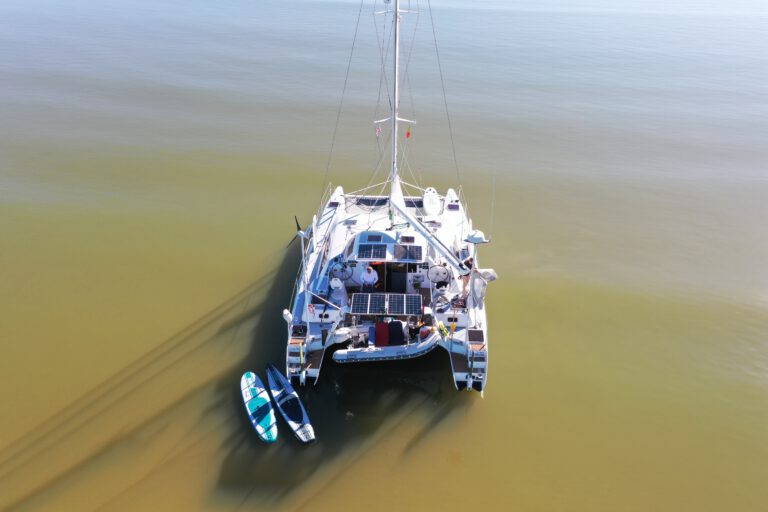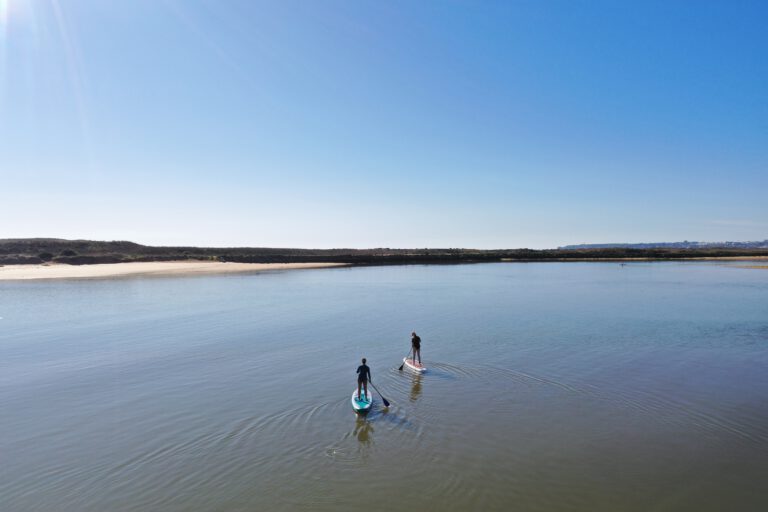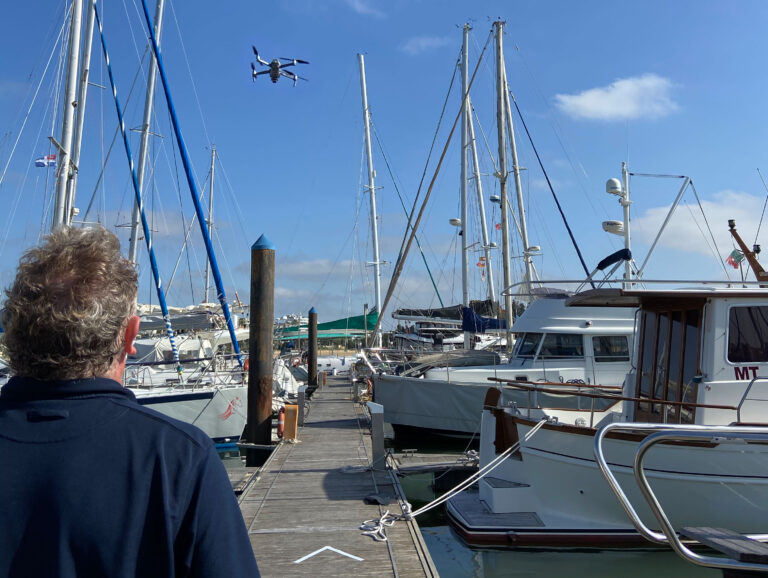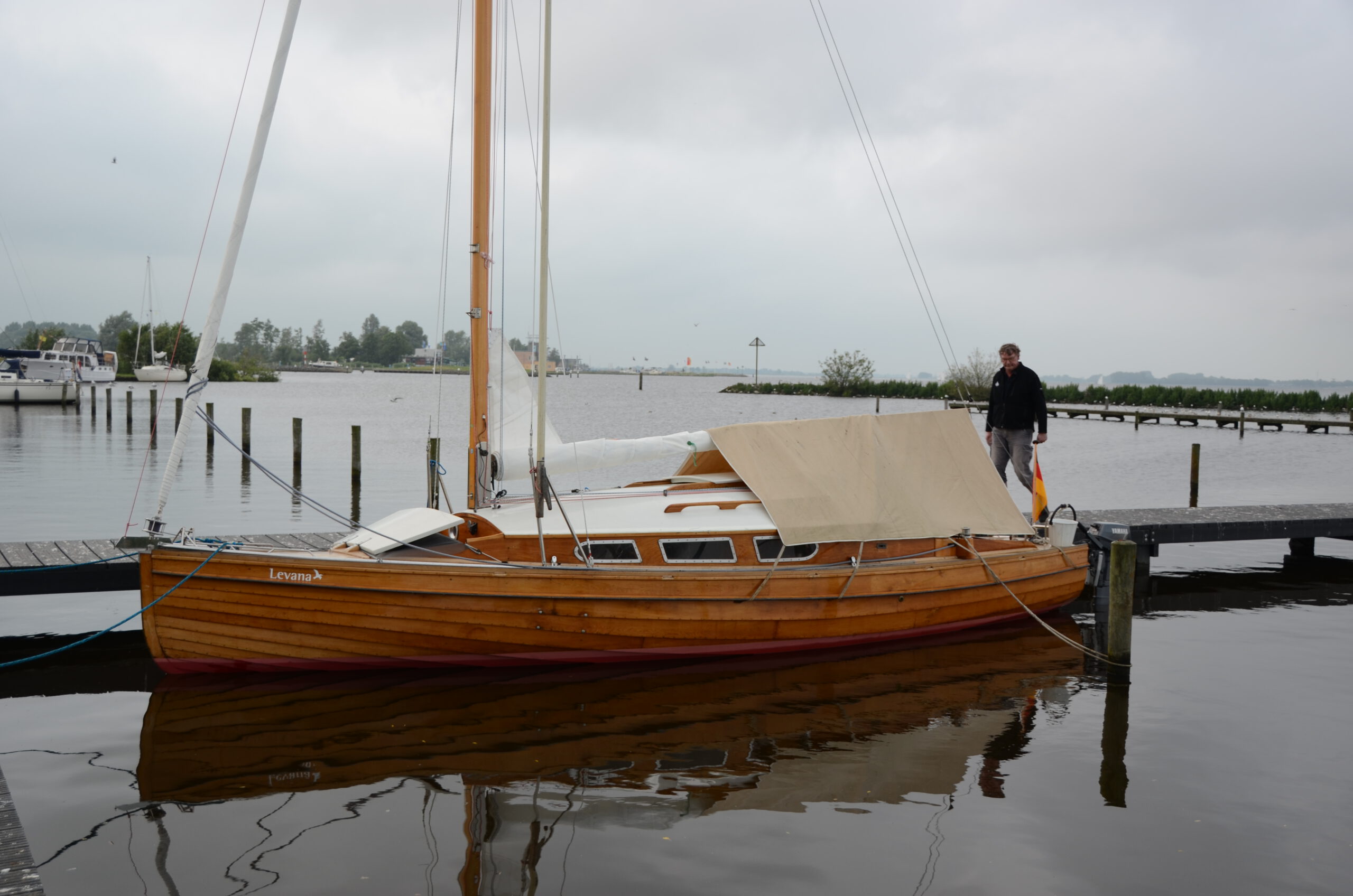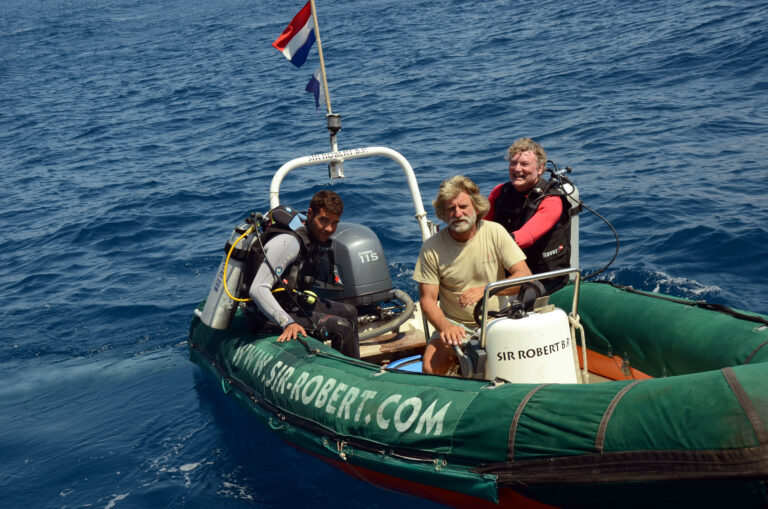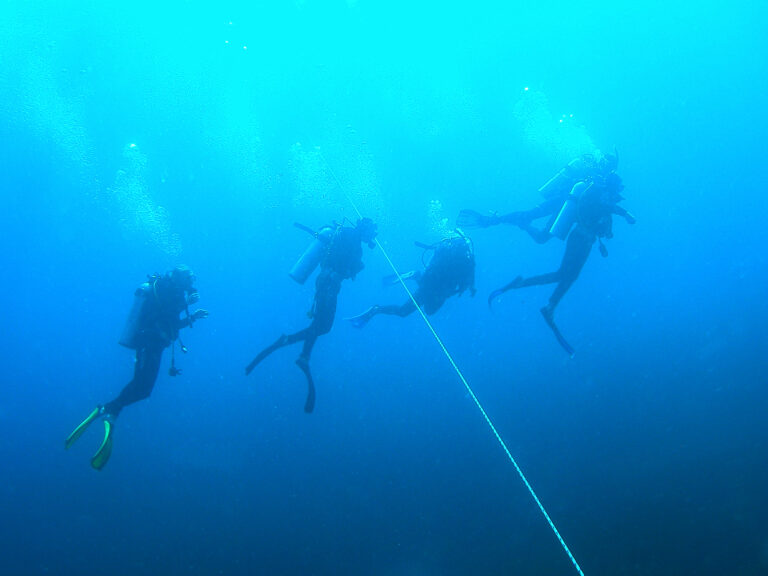Accessories
How to extend the possibilities of a catamaran.
Without the accessories and specials, our boat would not be usable in the range we live today. Here I would like to share our thoughts on the various “accessory topics”. In detail it is about:
Dinghy, bicycles, SUP´s, sun protection, scuba gear , drone+GoPro, fishing gear
and as well the equipment we renounced for various reasons (cost-benefit, energy consumption, weight, space, environment) such as: Generator, diving compressor, washing machine, dishwasher.
Dinghy
For us, a dinghy that matches the respective ship is part of the core of the ship’s equipment:
On the Traditional Gaff Ketch TS Roter Sand, we ran an 18-foot historic cutter made of clinkered oak with a 4-hp outboard, 4 oars and gaff sail, supplemented by a fast transport RIB with a 30-hp outboard for up to 8 people.
We were even able to store a dinghy on our F31 trimaran Windfee on the side nets, ready to hand: a Grabner speed canoe for up to 380 kg payload with a 4 hp motor and paddles supported our ship logistics when anchoring.
In 2020 we renewed our dinghy and are now running a 3.50 m Talamex RIB with aluminium bottom and PVC hoses; the 20 hp Mercury engine is equipped with hand and e-start. Talamex is a Dutch importer with a Chinese manufacturer behind it, supplying all sorts of dinghy brands such as Highfield, Zodiac and other aluminium-bottomed dinghies.
Our various dinghy models for different boats:
With a weight of 69 kilos, it can load 680 kg. Two of us can get planing with diving equipment of 4×11-litre bottles and sail at a maximum of 13 knots. Our shopping distances have thus increased to 5 nm. Against the wind, a 0.5 m wave is still good to sail. Above that, nothing stays dry.
We fitted it with a protective perennial cover specially made by the sailmaker, but this was more expensive than the extra charge for the Hypalon tubes, which do not need sun protection. A winter tarpaulin, which we hardly use, completes the dinghy accessories.
The dinghy is professionally equipped for night cruising with an autonomous solar-powered running light. We have additional folding wheels mounted on the stern, which make it possible to pull the boat onto the beach.
Bicycles
Are extremely important and belong to the boat equipment like the dinghy. Ours are almost indestructible folding bikes from Brompton.
Bernhard’s Bromptom is already 25 years old, has done many kilometres on land as well as several dives in the harbour, is therefore rusting a bit – and still runs. Petra bought the same one a few years ago. It was rusting in the same places after only 12 months, so unfortunately Brompton saved on the little things. Otherwise, we are very happy with the comfortable folding bikes that weigh only nine kg and can carry up to 120 kg with their strong frames and 7 bar power tyres. They fit perfectly in “the cellar”, our material load.
With the ingenious, waterproof Brompton panniers on the handlebars, the “Hackenporsche” as a trailer, bag on the luggage rack and rucksack on the back, we can even manage a 40 kg purchase per bike over a few kilometres on board. The shopping plus wheels fits into our 350 Talamex RIB and expands our movement and shopping possibilities enormously.
So it is sufficient for the supply of fresh groceries if we only go shopping from the anchorage every 14 days. So far, they have sailed on all our ships as a logistical trump card, because they fit into every large locker in the hold. Spare parts for the bikes also travel with them!
SUP`s
Petra was a windsurfer and had been flirting with an inflatable SUP for a long time. Then I gave her a beautiful 12-foot all-round board from Ocean Fun in teak look for Christmas and she immediately started paddling with it at our anchorage off Alvor. She impressed me with a perfect yoga headstand.
She then gave me a long carbon race paddle for my next birthday and I was motivated to try it. However, on her board, which is designed for 85 kilos of passengers, I despaired. Wobbles and repeated swim stunts had almost discouraged me until it dawned on me that at 115 kilos fighting weight I simply needed more buoyancy capacity. A cheap trade fair offer for a 15-foot Bluefin tandem board that can carry 160 kilos turned me into an enthusiastic SUP paddler.
We do our daily fitness SUP round of at least one hour at anchor, in the bay and in the harbour when it blows less than 15 knots. This way we stay fit and get nice contacts with other boat owners with whom we can have a little chat from the water at the railing.
Drone and GoPro camera
Producing high-quality documentations safely on board
– in the air, on, on and under water!
We used our first drone, the DJI Inspire 1 V2, for film documentaries of our Ocean Action Trainings at sea and on land. After the first few attempts, I gave it up again. I just wasn’t skilled enough to safely launch the clunky 3 kilo giant thing (60cm long) and land it on the moving ship. You also need a pilot and a second cameraman/woman with their own remote control to get good shots, which makes it very time-consuming to use on board. The remote communication sometimes broke down and it was only through the courageous efforts of the crew that the Inspire 1 could be saved from sinking in the tide! The large, heavy transport case is also impossible to stow on most yachts, and when it is on board, it is rarely unpacked due to its unwieldiness.
Videos from the Volvo Ocean Race motivated me to try a smaller device, the DJI Mavic Pro 2.
The small and handy Mavic Pro 2 has an ingenious folding mechanism and weighs only 900g. Catching is only possible on a sailing catamaran by deliberately “crashing” into the nets. The Hasselblad camera takes great pictures, but you have to correct the exposure manually for vertical shots. Regular software updates often lead to malfunctions, so you have to plan time for test flights in the open before use.
The only drone that is relatively safe to catch on sailboats is the DJI Phantom series, which has large landing feet. It is available in the current version as P4P +V2 for about 2000€. Cheaper are the older versions from the Phantom 2 onwards, a disadvantage is again the large pack size.
Before purchasing a drone, you need to obtain an A2 flight licence, which has been required throughout Europe since 2021 and is very easy to learn online (for example, at Copteruni https://www.copteruni.com/ )
We use the GoPro versions and cheap Chinese copies with the waterproof housing for recordings on the SUP and when diving, you just have to keep an eye on the possible fogging of the lens. We have had good experiences with the cheap Chinese housings and underwater lenses.
Sun Protection
You can’t have enough! In use against UV radiation, heat, rain, dew, wind, snow and ice and even against New Year’s Eve firecrackers…
I myself suffer from vitiligo, an autoimmune disease that destroys skin pigmentation and forms bright, sensitive patches on the skin. Therefore, I have been a “shade jumper” for decades and use factor 50+ sun cream from the pharmacy against the UV radiation.
Large tarpaulins over the whole ship provide shade and cool spots on board. It is important to use light colours against heat and strong cloth material that blocks the UV rays, is wind-stable and can also be rigged when sailing.
In addition, we have modern, UV-coated sun sails (tarp and parasol) for flexible shade rigging for all occasions, including trips to the beach. This way we are always protected against sun, wind and rain and find a relaxing place on board..
Diving gear
Bernhard, as an experienced diver (ex-salvage diver with the German Federal Agency for Technical Relief), motivated Petra to get her “tiling certificate”. So we did diving and sailing courses on the Sir Robert and then completed our own equipment for dives from the Wind of Change.
We have four 11 litre scuba tanks (steel), two can be optinally combined to a double package. In addition, we have 2 identical equipment sets as used by the naval divers of the Bundeswehr and buoyancy jackets from PD² Technology GmbH in Hamburg. 8 mm neoprene semi-dry suits and dive computers have been part of our equipment for a long time. Just like our 4-year-old Poseidon automatic and jacket combination as a reserve.
When we go diving, we book local dive guides for the local attractions and dive sites. It makes sense to fill the tanks at these schools as well. This saves the noisy diving compressor and the heavy, loud generator for it: The Capitano, for example, needs 4 -5 hours for 4 X 11 l tanks with manual monitoring of the water separators! That is much too annoying for us on board.
Fishing Gear
We imagine that deep-sea fishing could be a nutritional supplement on long journeys.
For this purpose, there is a stable, specially made fishing bracket on the starboard radar mast for a heavy deep-sea fishing rod for catches up to 40 kg.
We also bought suitable bait, 300 m of nylon line, leaders, a gaff and a large net landing net. We have never caught anything – because we have never fished. Because when you’re sailing as a couple, the long trips are quite exhausting and the idea of dragging a fish on board and slaughtering it at 12 knots of speed and high Atlantic waves wasn’t motivating enough.
Let’s see if that will change. At least we are prepared…..




